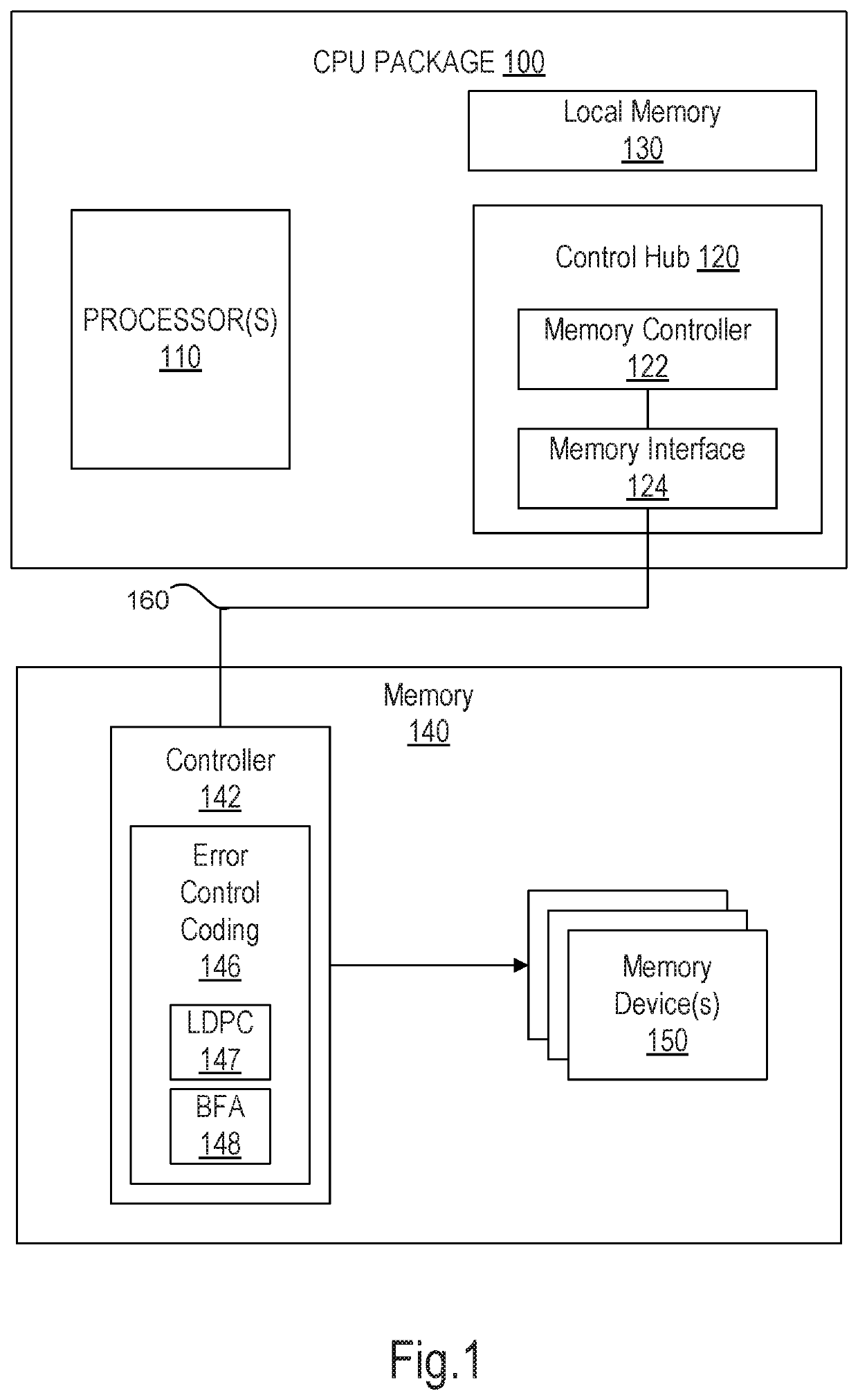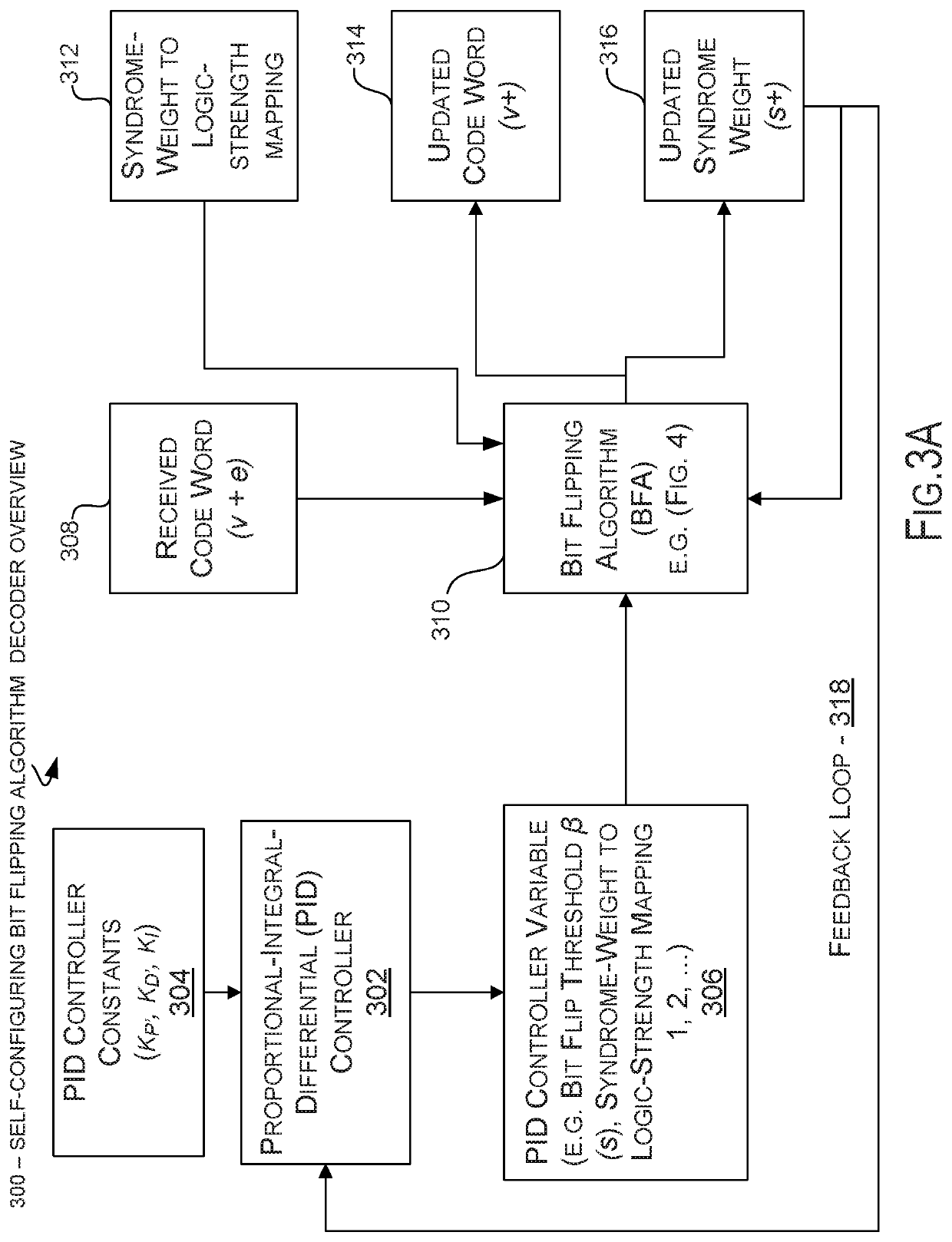Self-configuring error control coding
a self-configuring, error-control technology, applied in the field of electronic devices, can solve the problem that data retrieved from memory still exhibits an error probability popularly termed the uncorrectable bit-error rate (uber)
- Summary
- Abstract
- Description
- Claims
- Application Information
AI Technical Summary
Problems solved by technology
Method used
Image
Examples
Embodiment Construction
[0013]ECC can be implemented with linear block codes that are easily decoded, such as low-density parity check (LDPC) codes. To improve decoding efficiency, a common approach is to use two-tier decoding. For example, a small decoder is used for low RBER data and a stronger decoder for high RBER data, the former referred to as hard-decision decoding (HDD) and the latter as soft-decision decoding (SDD).
[0014]Even greater decoding efficiency can be achieved, by an order of magnitude reduction in latency, with a three-tier approach that uses a bit-flipping algorithm (BFA) decoder. Among other advantages, a BFA decoder is a small, low latency unit that can handle most decoding traffic (>99%) in a typical operating environment.
[0015]A BFA decoder is an iterative decoding algorithm that carefully flips the bits of an erroneous codeword until all the syndromes are satisfied, where a syndrome refers to a parity check equation. To aid in the decoding process, a BFA internally grades the extra...
PUM
 Login to View More
Login to View More Abstract
Description
Claims
Application Information
 Login to View More
Login to View More - R&D
- Intellectual Property
- Life Sciences
- Materials
- Tech Scout
- Unparalleled Data Quality
- Higher Quality Content
- 60% Fewer Hallucinations
Browse by: Latest US Patents, China's latest patents, Technical Efficacy Thesaurus, Application Domain, Technology Topic, Popular Technical Reports.
© 2025 PatSnap. All rights reserved.Legal|Privacy policy|Modern Slavery Act Transparency Statement|Sitemap|About US| Contact US: help@patsnap.com



